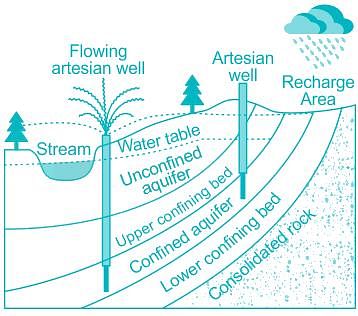Test: Well Hydraulics - Civil Engineering (CE) MCQ
10 Questions MCQ Test Engineering Hydrology - Test: Well Hydraulics
Aquifers are generally the permeable geological formations, in which ground water occurs. Which of the following is a type of Aquifer in which ground water is confined under pressure greater than atmospheric by over-lying, relatively impermeable strata?
| 1 Crore+ students have signed up on EduRev. Have you? Download the App |
In the storage coefficient, the unit change in the component of the head is measured in _________ to the surface.
If b is the aquifer thickness, the relationship between coefficient of transmissibility T and coefficient of permeability is ________
The relation between porosity n, specific retention SR, specific yield Sγ is __________
The drawdown, corresponding to a steady discharge, are observed at a number of wells in _______
An aquifer confined at the bottom, but NOT at the top is called
The soil which can store water and allow a small quantity to flow through it over a long period is called:-
|
20 videos|36 docs|30 tests
|
|
20 videos|36 docs|30 tests
|


















